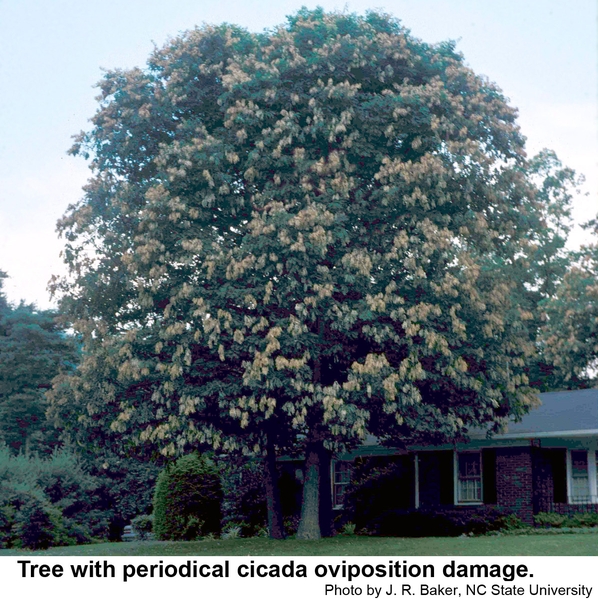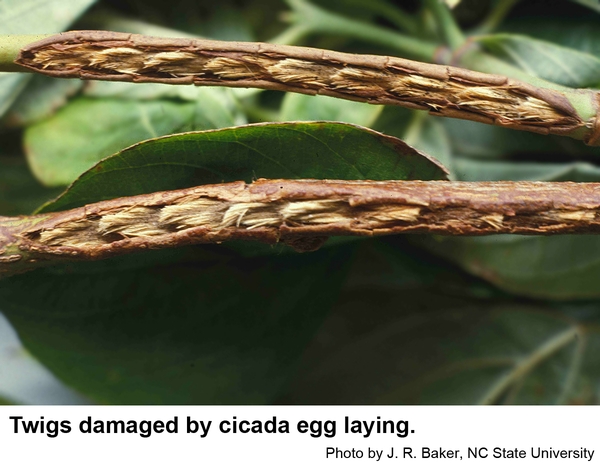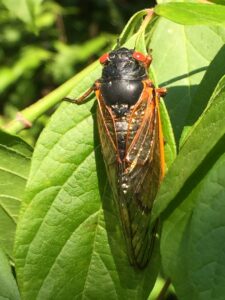Their short lives consist of finding a mate and laying eggs. The males are responsible for the shrill noises that they make to attract females. Once the male has fertilized the eggs, the females make cuts in the twigs and branches of trees and shrubs and lay their eggs in a double row about 4-5 inches long. The new generation of nymphs hatch in about six to ten weeks and drop to the ground where they burrow and feed on the roots of trees for the next 17 years.
For more information:
Periodical Cicadas in the Landscape (NC State Factsheet)
Here They Come Again! More Periodical Cicadas Will Emerge This Spring, by Matt Bertone
Yes, Periodical Cicadas are Coming Soon! (2024 Blog -post on this website)
The Cicadas Are Coming! Fear Not, Though, by Matt Bertone
This article was first posted on buncombemastergardener.org
Visit the website to sign up for the blog and receive posts about the many educational and event activities held by the NC State Extension Master GardenerSM volunteers in Buncombe County.







